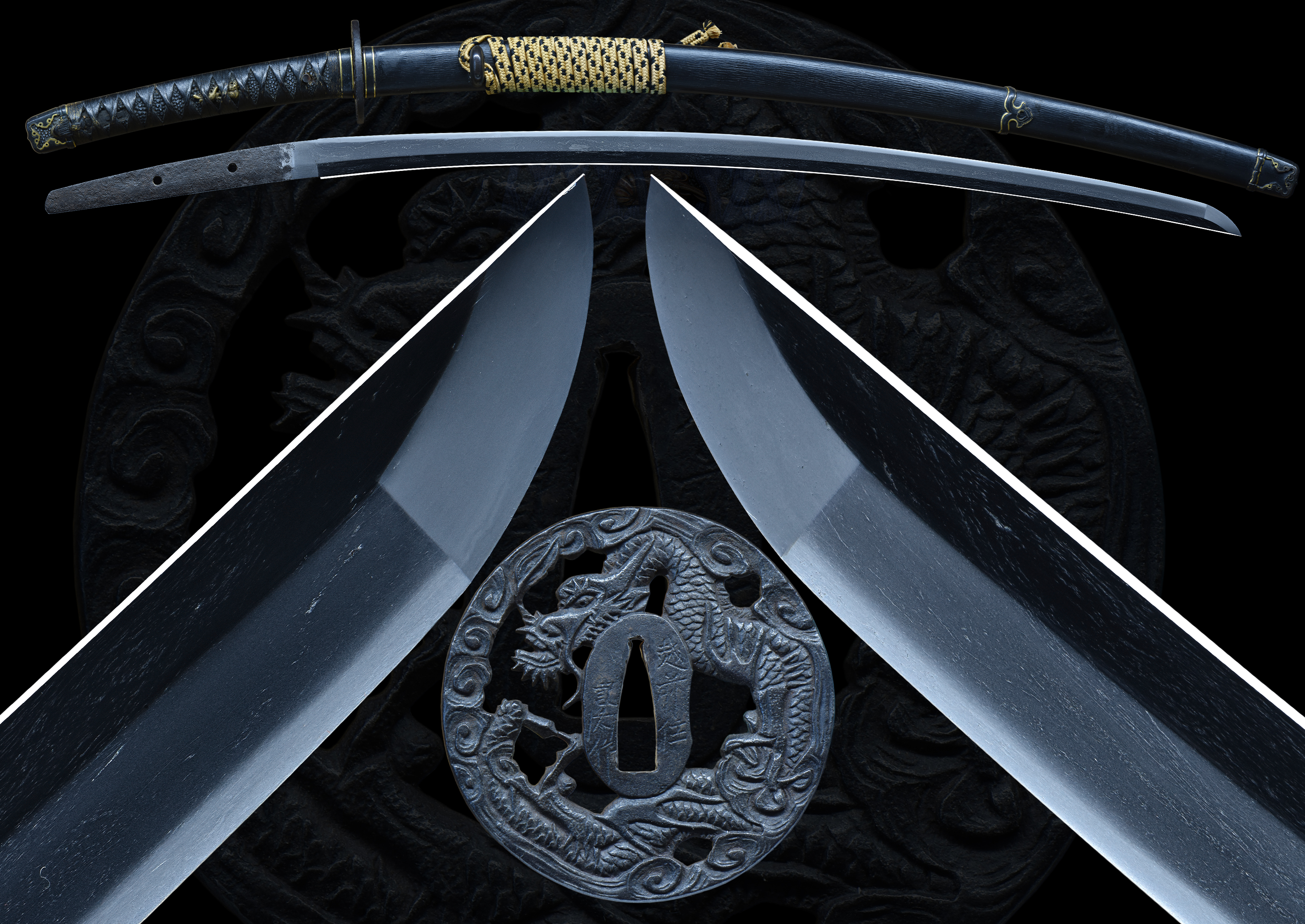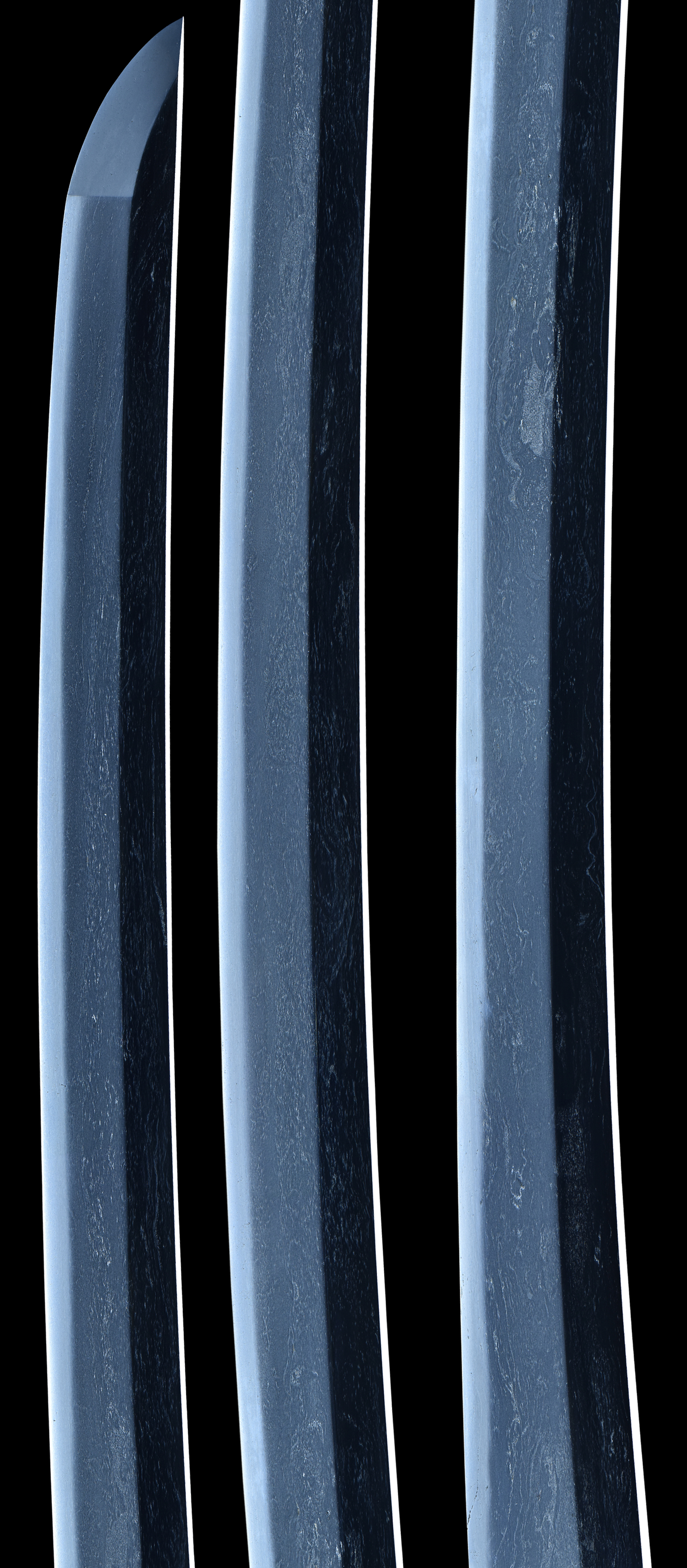This is a koto Bizen katana. It looks like its from the Muromachi era. The quality of this sword is good and has virtually no flaws. This blade is ubu and there are 2 holes to the sword. There also appears to be a signature and date that is very obscured and not legible but is there. The hamon is a mixture of sugu-ha and slight shallow notare midare with an itame/mokume mix for hada that is well forged. The koshirai is black lacquered and in the handachi style all in suite . The mounts are in good shape and are more in a classical style for a samurai and not meant to be flashy. The handle has a leather tsukamaki that is black lacquered. The tsukamaki is a very nice detail and not always found in this condition. The tsuba is a Kinai sukashi style of a Dragon. The menuki are also of dragons in gold wash and the tsuki-ito is a black leather over black Same(rayskin), with a gold and black sageo to match. The habaki is of good quality. It is in polish. It would be a great candidate for shinsa someday. Its mounted solidly .
Bizen Province:
In the southwest area of Okayama, was once known as the sword kingdom.
Possessing talented swordsmiths and nearby high-quality raw materials accessible by water transportation, Bizen produced the most swords in Japan during the Heian Period (794-1185), beating Yamashiro, Yamato, Sagami and Mino, the other popular sword-making areas.
In the Muromachi period, Harima, Mimasaka and Bizen province had prospered under the protection of the Akamatsu family. Above all, Bizen province has turned out a great many talented swordsmiths. Supplying the demand of the Age of Provincial Wars in Japan, a large number of swords were made there in the late Muromachi period. Sukesada has become a synonym for the Osafune School though the founder was Mitsutada. It is regrettable that a deluge devastated the School in Osafune districts in Tensho era. Such is the way of the world that even the Osafune School, that prosperity and power had been unparalleled, perished in this way in the deluge. Old swords are all that is left to tell how once the swordsmiths lived.
- Mei: Very difficult to read but clearly can see its Signed and dated.
- Date: Koto(1400’s-1500’s)
- Nagasa: 26-1/8 inches
- Sori: 25.0 mm
- Width at the ha-machi: 28.6 mm
- Width at the yokote: 18.5 mm
- Thickness at the mune-machi: 8.0 mm
- Construction: Shinogi zukuri
- Mune: Iori
- Nakago: Ubu
- Kitae: Itame/mokume
- Hamon: Midare Gunome
- Boshi: Maru
- Condition: Good polish
(shipping and insurance included)
Email us if your interested in this item and remember to include the order number for this item: fss-881.
Click to Enlarge Image
Click to Enlarge Image
For Sale

























